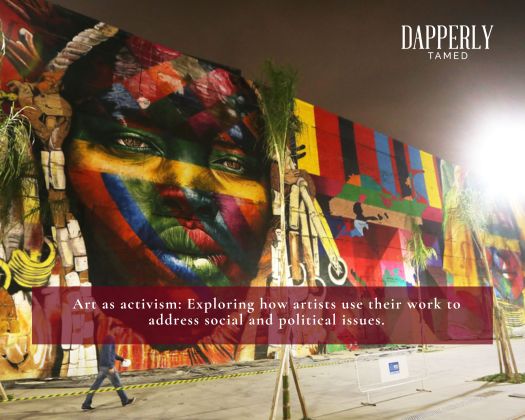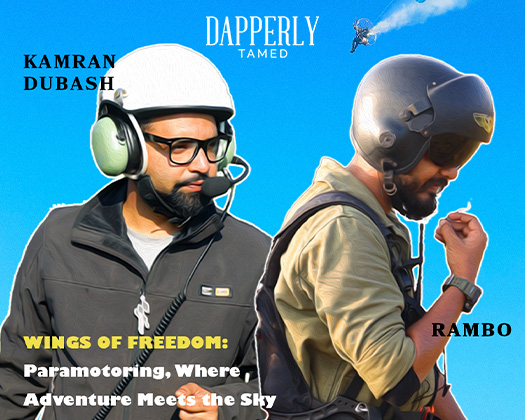Art as Activism: Exploring How Artists Use Their Work to Address Social and Political Issues
Introduction
Art has long been recognized as a powerful vehicle for social and political activism, providing artists with a unique platform to express dissent, challenge norms, and provoke critical conversations. This article delves into the multifaceted ways in which artists use their creative practices to engage with and address pressing social and political issues. From thought-provoking visual art to poignant musical compositions, literature, performance art, and impactful documentaries, artists play a crucial role in shaping public discourse and inspiring change.
Visual Art: A Canvas for Dissent
Visual art serves as a compelling medium through which artists address social and political issues. By using paintings, sculptures, street art, and installations, artists can visually convey their perspectives, challenge established norms, and spark conversations. Notable examples include Gustave Courbet's "The Stone Breakers," which exposed social inequality and the plight of manual laborers, and Pablo Picasso's "Guernica," a powerful anti-war statement depicting the devastating effects of violence on innocent civilians.
Contemporary artists like Banksy continue this tradition, using street art to challenge societal norms, consumerism, and political activism. Banksy's anonymity adds an air of mystery to his works, emphasizing the universality of the messages conveyed.
Music: Harmonies of Dissent
Music has played a pivotal role in social and political movements throughout history. Artists use lyrics, melodies, and rhythms to convey messages of dissent, unity, and resistance. Bob Dylan, a key figure in the 1960s civil rights movement, used his folk-rock music to spread messages of equality and justice. Songs like "Blowin' in the Wind" and "The Times They Are a-Changin'" became anthems for social change, inspiring generations to challenge the status quo.
Contemporary musicians also contribute to activism. Artists like Kendrick Lamar address systemic racism, police brutality, and social inequality through their music, creating a soundtrack for modern social movements.
Literature: Narratives of Resistance
Literature serves as a powerful tool for addressing social and political issues by delving into complex narratives and human experiences. Writers use novels, poems, and essays to provide perspectives on issues such as racism, gender inequality, and political oppression. Maya Angelou's autobiographical works, including "I Know Why the Caged Bird Sings," shed light on racial discrimination, while George Orwell's "1984" critiques authoritarianism and censorship.
Through the art of storytelling, literature fosters empathy, challenges societal norms, and sparks dialogue, making it an integral part of the activist's toolkit.
Performance Art: Breaching Boundaries
Performance art breaks away from traditional artistic forms, allowing artists to create immersive and interactive experiences that challenge societal norms. Through live performances, body art, and street performances, artists confront audiences with thought-provoking narratives. Performance artist Marina Abramović, for instance, uses her body as a canvas to explore themes of endurance, vulnerability, and the human experience.
Performance art as activism involves artists using their creative expressions to address social and political issues directly. It demands active participation from both the artist and the audience, fostering a unique and often visceral connection.
Film and Documentary: Capturing Realities
Film and documentary filmmaking provide a visual medium for storytelling that is highly effective in addressing social and political issues. Documentaries like Ava DuVernay's "13th" expose systemic racism within the U.S. criminal justice system, while films like "Selma" depict pivotal moments in the civil rights movement.
These mediums inform, educate, and evoke emotions, creating a bridge between complex issues and the audience. By presenting factual information and real-life stories, filmmakers contribute to raising awareness and inspiring action.
Art as a Catalyst for Social Change
Art, in all its diverse forms, serves as a catalyst for social change by generating awareness, sparking conversations, and inspiring action. Artists use their work to challenge existing power structures, give voice to the marginalized, and provide alternative perspectives. The emotional resonance of art makes it a potent force in fostering empathy and understanding.
The Importance of Freedom of Expression
The freedom of expression is paramount in allowing artists to address social and political issues without fear of censorship or reprisal. It enables a vibrant and diverse cultural landscape where artists can contribute to meaningful dialogue and challenge the status quo.
Controversies and Challenges Faced by Artists
While artists strive to address social and political issues, they often face controversies and challenges. Censorship, a significant threat to creative expression, can limit the impact of their work. Financial constraints also pose challenges, limiting artists' ability to create and share their work widely.
Examples of Artists Addressing Social and Political Issues
Throughout history, numerous artists have left an indelible mark by addressing social and political issues. Banksy's street art challenges societal norms, Ai Weiwei confronts political and human rights issues through his artwork, Frida Kahlo examines gender and identity, Bob Dylan's music inspires social change, and Maya Angelou's literature explores themes of race and inequality.
Conclusion
Artists play a crucial role in addressing social and political issues, using their creative expressions to challenge, inspire, and provoke change. Whether through visual art, music, literature, performance art, or film, artists contribute to a collective understanding of societal challenges. As we navigate a complex world, the role of artists as messengers, catalysts for change, and influencers remains essential. By recognizing the power of art as a catalyst for social change, society can engage in meaningful conversations and work towards a more just and equitable world.








